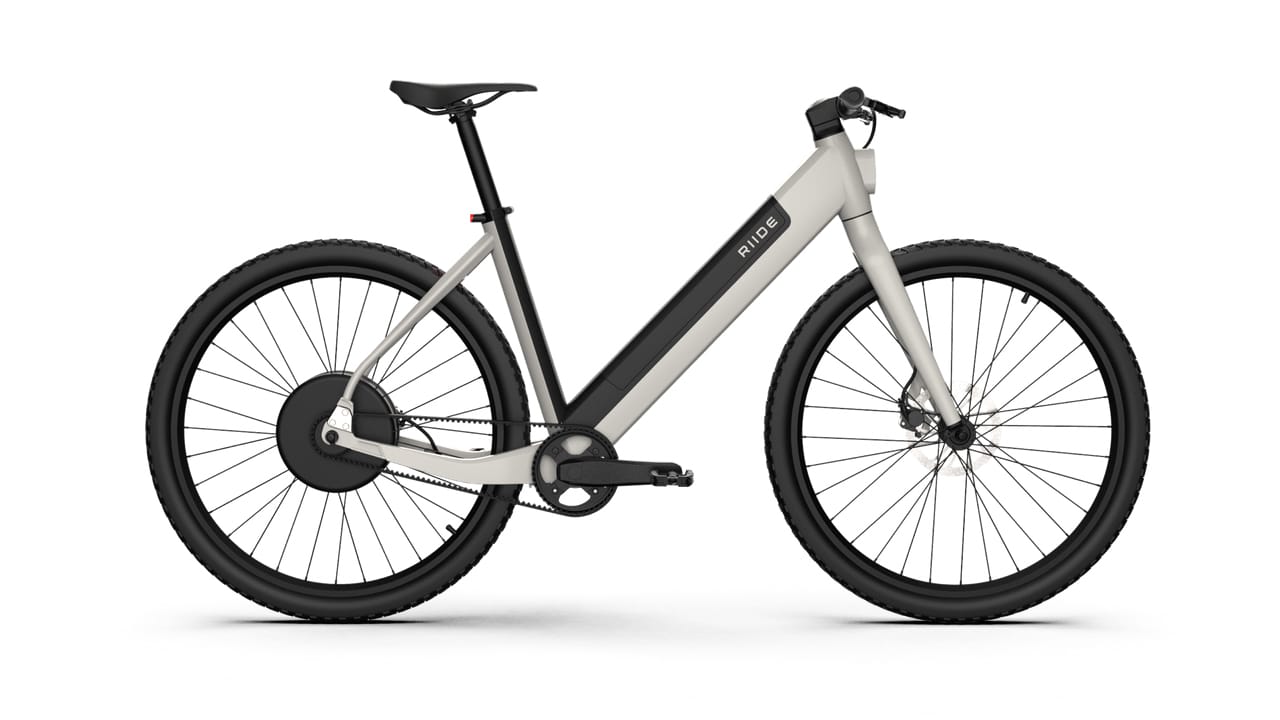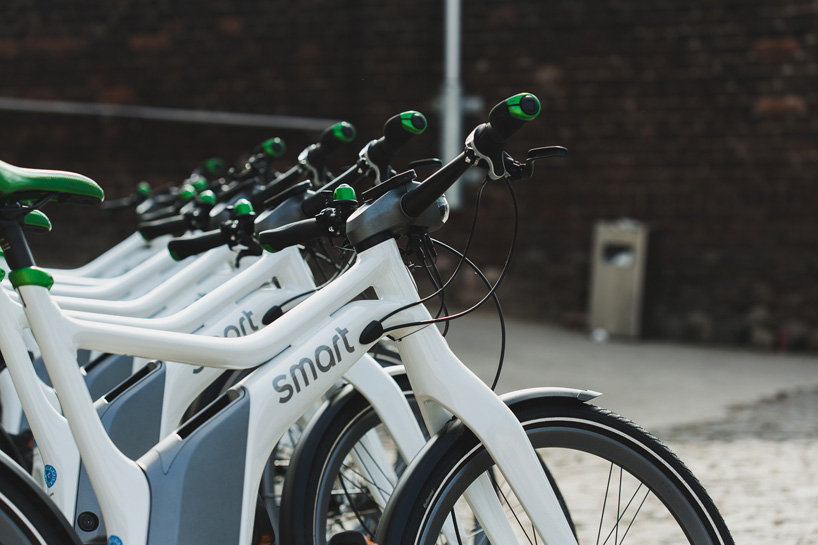The Role of Artificial Intelligence in eBike Creation
Artificial Intelligence (AI) is revolutionizing various industries, and sustainable transportation is no exception. AI for sustainable eBike design brings forth a multitude of benefits, including improved efficiency, reduced environmental impact, and enhanced user experience. By leveraging AI technologies, eBike manufacturers can create innovative, eco-friendly solutions that cater to the growing demand for sustainable urban mobility.

How AI Contributes to Energy Efficiency in eBike Design
Artificial Intelligence (AI) plays a significant role in enhancing energy efficiency in eBike design. By optimizing various factors, such as battery management, motor control, and regenerative braking, AI can contribute to extending the range of eBikes and reducing their environmental impact. Here’s how AI can help:
Battery Management Systems
AI-powered Battery Management Systems (BMS) can optimize energy consumption and extend the battery life of eBikes. By analyzing real-time data on battery charge, discharge rates, and temperature, AI algorithms can predict and prevent battery degradation, ensuring optimal performance and reducing the need for frequent battery replacements. Moreover, AI-driven BMS can adapt to individual riding patterns and adjust energy usage accordingly, further improving energy efficiency.
Motor Control
AI can also optimize motor control in eBikes. By analyzing factors like rider input, pedaling torque, and terrain conditions, AI algorithms can adjust motor assistance levels in real-time, ensuring a smooth and efficient riding experience. This not only improves energy efficiency but also enhances the overall riding experience by providing seamless power assistance.
Regenerative Braking
Regenerative braking is a technique that converts kinetic energy into electrical energy during braking, which can then be used to recharge the eBike’s battery. AI can optimize regenerative braking by determining the optimal braking force and energy recovery rate based on factors like speed, incline, and rider input. By doing so, AI can help extend the eBike’s range and reduce energy waste, ultimately contributing to a more sustainable and eco-friendly riding experience.

AI-Driven Eco-Friendly Material Selection for eBike Production
Artificial Intelligence (AI) can significantly contribute to the selection of eco-friendly materials for eBike production. By analyzing various factors, such as recyclability, low carbon footprint, and durability, AI can help manufacturers make informed decisions about material choices, ultimately leading to a more sustainable eBike design. Here’s how AI can assist:
Material Analysis
AI algorithms can analyze the properties of different materials, such as their weight, strength, and durability, to determine their suitability for eBike components. By comparing these properties with sustainability factors, such as recyclability and carbon footprint, AI can identify materials that offer the best balance between performance and sustainability.
Supply Chain Analysis
AI can also analyze the supply chain of materials, taking into account factors like the distance between suppliers and manufacturers, transportation methods, and packaging materials. By optimizing these factors, AI can help reduce the overall carbon footprint of eBike production, contributing to a more sustainable manufacturing process.
Lifecycle Analysis
AI can perform lifecycle analysis, which involves assessing the environmental impact of materials throughout their entire lifecycle, from extraction and production to use and disposal. By analyzing the environmental impact of different materials, AI can help manufacturers make informed decisions about material choices, ultimately leading to a more sustainable eBike design.
Predictive Maintenance
AI can also assist in predicting the maintenance needs of eBikes, which can help reduce waste and prolong the lifespan of eBike components. By analyzing data on component wear and tear, AI can predict when maintenance is required, allowing manufacturers to replace components before they fail, reducing waste and extending the lifespan of eBikes.

AI-Powered Smart Navigation for Sustainable eBike Routes
Artificial Intelligence (AI) can significantly enhance the sustainability of eBike routes by providing real-time, eco-friendly navigation suggestions. By analyzing various factors, such as traffic, road conditions, and elevation, AI can help eBike riders optimize their routes, reducing energy consumption and contributing to a more sustainable mode of transportation. Here’s how AI can assist:
Real-Time Traffic Analysis
AI algorithms can analyze real-time traffic data to determine the most efficient routes for eBike riders. By avoiding congested roads, eBike riders can reduce their travel time and energy consumption, ultimately contributing to a more sustainable mode of transportation.
Road Condition Analysis
AI can also analyze road conditions, such as potholes and road surface quality, to determine the most comfortable and energy-efficient routes for eBike riders. By avoiding rough roads, eBike riders can reduce their energy consumption and prolong the lifespan of their eBikes.
Elevation Analysis
AI can analyze elevation data to determine the most energy-efficient routes for eBike riders. By avoiding steep hills, eBike riders can reduce their energy consumption and prolong the lifespan of their batteries. Additionally, AI can suggest routes with downhill sections, where eBike riders can use regenerative braking to recharge their batteries, further contributing to energy efficiency.
Integration with Smart Cities
As cities become smarter, AI-powered eBike navigation can integrate with smart city infrastructure to optimize routes for eBike riders. By analyzing data from traffic lights, bike lanes, and other transportation modes, AI can provide real-time, eco-friendly route suggestions, contributing to a more sustainable urban mobility system.
AI-Enhanced User Experience in Sustainable eBike Design
Artificial Intelligence (AI) has the potential to significantly improve the user experience of sustainable eBikes. By incorporating AI-powered features, eBike manufacturers can offer personalized riding modes, predictive maintenance, and smartphone integration, among other benefits. Here’s how AI can enhance the user experience:
Personalized Riding Modes
AI can analyze rider data, such as weight, height, and riding style, to create personalized riding modes. By tailoring the eBike’s performance to the rider’s preferences, AI can enhance the overall riding experience and improve efficiency.
Predictive Maintenance
AI can analyze data from eBike sensors to predict potential maintenance issues before they become serious problems. By alerting riders to potential issues, AI can help prevent breakdowns and prolong the lifespan of eBike components.
Smartphone Integration
AI can enable smartphone integration, allowing eBike riders to access features such as GPS navigation, fitness tracking, and ride data analysis. By integrating with smartphones, eBikes can become more versatile and convenient, enhancing the overall user experience.
Automatic Software Updates
AI can enable automatic software updates, ensuring that eBikes are always running the latest software. By keeping eBikes up-to-date, AI can improve performance, enhance security, and provide new features to riders.
Voice Control
AI can enable voice control, allowing eBike riders to control their eBikes using voice commands. By enabling voice control, AI can make eBikes more accessible and convenient, especially for riders with disabilities.
Examples of AI Implementation in Sustainable eBike Models
AI for sustainable eBike design is already being implemented by several eBike brands, showcasing the potential benefits and improvements of AI integration. Here are some real-world examples:
Cowboy Electric Bike
The Cowboy Electric Bike is a smart eBike that features a sleek design and AI-powered navigation. The bike’s integrated GPS system provides real-time route suggestions, taking into account factors like traffic, road conditions, and elevation. Additionally, the Cowboy Electric Bike features predictive maintenance, automatic software updates, and smartphone integration, enhancing the overall user experience.
VanMoof Electric Bike
The VanMoof Electric Bike is another example of AI integration in eBikes. The bike features an AI-powered anti-theft system that uses a combination of GPS tracking and smart alarms to prevent theft. Additionally, the VanMoof Electric Bike features automatic software updates, predictive maintenance, and smartphone integration, providing a seamless and convenient user experience.
Gocycle G4
The Gocycle G4 is a high-performance eBike that features AI-powered motor control. The bike’s motor control system uses AI algorithms to optimize energy consumption, providing a more efficient and eco-friendly riding experience. Additionally, the Gocycle G4 features predictive maintenance, automatic software updates, and smartphone integration, enhancing the overall user experience.

Future Perspectives: AI and the Evolution of Sustainable eBike Design
AI for sustainable eBike design has the potential to revolutionize the way we think about eBike manufacturing and usage. As AI technology continues to advance, we can expect to see even more innovative and eco-friendly features in eBike designs.
Advancements in AI Technology
Advancements in AI technology will enable eBike manufacturers to create even more energy-efficient and eco-friendly designs. For example, AI algorithms can be used to optimize battery management systems, reducing the amount of energy wasted during charging and discharging. Additionally, AI-powered motor control systems can be used to optimize energy consumption based on the rider’s pedaling style and the terrain.
IoT Integration
The integration of AI with the Internet of Things (IoT) will enable eBike manufacturers to create more connected and intelligent eBikes. For example, eBikes can be equipped with sensors that collect data on the rider’s usage patterns, the bike’s performance, and the environment. This data can then be analyzed using AI algorithms to provide real-time insights and recommendations for eco-friendly riding.
Smart City Infrastructure
As cities become smarter and more connected, eBikes can be integrated into smart city infrastructure to create more sustainable transportation systems. For example, eBikes can be equipped with AI-powered navigation systems that provide real-time route suggestions based on traffic, road conditions, and elevation. Additionally, eBikes can be integrated with public transportation systems, enabling riders to seamlessly switch between different modes of transportation.
Challenges and Considerations
While AI has the potential to revolutionize sustainable eBike design, there are also challenges and considerations that need to be addressed. For example, data privacy and security are major concerns, as eBikes collect and transmit sensitive data. Additionally, ethical considerations need to be taken into account, such as ensuring that AI algorithms are transparent and unbiased.

Challenges and Considerations in AI-Driven Sustainable eBike Design
As AI becomes increasingly integrated into sustainable eBike design, there are several challenges and considerations that need to be addressed. These include data privacy, security, and ethical considerations.
Data Privacy
AI-powered eBikes collect and transmit sensitive data, such as location, usage patterns, and personal preferences. It is essential to ensure that this data is kept private and secure. This can be achieved through the use of encryption, secure data transmission protocols, and strict data access controls.
Security
AI-powered eBikes are also vulnerable to cyber attacks. Hackers could potentially gain access to sensitive data, take control of the bike, or disrupt its operation. To mitigate these risks, eBike manufacturers need to implement robust security measures, such as firewalls, intrusion detection systems, and regular security updates.
Ethical Considerations
AI-powered eBikes also raise several ethical considerations. For example, there is a risk that AI algorithms could be biased, leading to unfair or discriminatory treatment of certain users. Additionally, there is a risk that AI-powered eBikes could be used for surveillance or other nefarious purposes. To address these concerns, eBike manufacturers need to ensure that their AI algorithms are transparent, unbiased, and ethical.
Regulation
As AI becomes increasingly integrated into sustainable eBike design, there is a need for clear and comprehensive regulations. These regulations should address issues such as data privacy, security, and ethical considerations. They should also provide guidelines for the safe and responsible use of AI-powered eBikes.
Collaboration
Finally, the development of AI-powered sustainable eBikes requires collaboration between various stakeholders, including eBike manufacturers, AI developers, policymakers, and users. By working together, we can ensure that AI-powered sustainable eBikes are designed and used in a way that maximizes their benefits while minimizing their risks.

